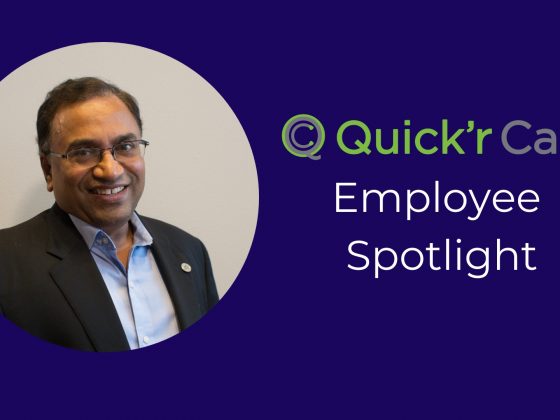Urgent care provides a great opportunity for patients to receive the prompt care they need during a medical emergency, particularly when one’s primary care physician is unavailable and the health issue is not life-threatening.
However, many who are less familiar with how urgent care works make common mistakes that make their experience less than satisfactory. By understanding these mistakes and taking the necessary precautions to avoid them, you can ensure your trip to urgent care is the right course of action and goes according to plan.
The following are six of the more common mistakes to avoid when going to an urgent care clinic.
Choose The Right Facility
Each urgent care facility is different and provides different services. While most urgent care facilities are able to effectively and efficiently diagnose and treat the initial symptoms of a non-life threatening injury or illness, some urgent care facilities may not provide certain services.
Subsequently, it is important to ensure you visit an urgent care facility that is capable of meeting your exact needs. Otherwise, you run the risk of your injury or illness not being able to effectively be treated at urgent care, causing the medical issue to grow increasingly worse or linger for longer than what is necessary.
The best way to ensure you choose a facility that is able to diagnose and treat your exact medical emergency, use the Quick’r Care urgent care facility finder, which helps match you with a facility that is capable of dealing with your exact issue.
Avoid Long Waits
Another common mistake those who visit urgent care for the first time make is assuming that sense urgent care’s main intent is to treat medical emergencies that are not life-threatening in a prompt manner, that there is not a wait at an urgent care facility.
Although there is not a need to schedule an appointment with an urgent care facility, there is typically a wait time involved with walk-in patients, especially if the clinic is currently busy at the time you go. This can lead many to become frustrated and suffer in their symptoms for longer than what is necessary.
Fortunately, there is a way to combat this issue and avoid the long wait time by using Quick’r Care to locate urgent care centers that have a short wait time and then scheduling an appointment ahead of time to further ensure a long wait does not occur.
Know Your Insurance Policy
Most insurance policies cover most treatments administered at an urgent care clinic, but it is important to double check and make sure before taking a trip to urgent care. Otherwise, you run the risk of visiting urgent care and receiving treatment, only to find out your insurance policy does not cover the service the urgent care center provided.
In the event your insurance policy does not cover the service needed at urgent care, you can re-examine your need and determine if the trip is necessary.
Of course, an injury or illness that causes painful symptoms and requires prompt treatment should be dealt with as soon as possible, which is in many cases at an urgent care facility. On these occasions, it is often best to visit urgent care anyways, understanding the out of pocket cost is typically lower at urgent care than at an emergency room.
If your need is less urgent – such as a flu shot or diagnostic screening – it may be best to wait and receive the care with a primary physician, which the insurance policy may cover.
Be Open and Honest
When visiting urgent care, it is also important to realize that the medical professionals there are not going to be at all familiar with your medical history. Subsequently, it is important to be completely open and honest with them when answering any questions they ask.
When a patient withholds information at urgent care, it can cause an inaccurate diagnosis and treatment plan, which may cause the symptoms from the medical issue to worsen or linger for longer than necessary.
By being open and communicative about your prior medical history, you can ensure the medical professionals at urgent care are able to accurately diagnose your ailment and administer the most appropriate treatment possible.
Fill Prescriptions Elsewhere
Many who visit urgent care also make the mistake of assuming that the urgent care facility is capable of filling prescriptions that they themselves prescribed to the patient. However, this is not the case. Before attending an urgent care facility, it is also important to understand what they are and what they are not as it pertains to the filling of prescriptions.
Most urgent care facilities are able to effectively diagnose a wide variety of illnesses and injuries. After which, they can help treat the initial symptoms of the individual and recommend a course of treatment.
However, urgent care facilities are not able to fill or refill prescriptions, and doing so must be done by another provider.
In other words, an urgent care facility can diagnose and treat symptoms initially, but long-term treatment must be administered by a primary care physician.
Know When to Visit The ER
Lastly, it is essential to be able to determine the difference between a medical emergency that is able to be treated at urgent care and what medical emergencies require a trip to the emergency room.
Essentially, a general but not exact rule to follow is any medical emergency that is not life-threatening can be properly diagnosed and treated at an urgent care center.
However, since urgent care centers are not staffed with surgeons, specialized doctors and a variety of specialty equipment for a wide range of injuries and illnesses in the same manner a hospital is, any injury or illness that is potentially life-threatening should be attended to at the emergency room.
When in doubt, be sure to call ahead or use the Quick’r Care website to find out if there is an urgent care facility that is capable of meeting your exact medical needs.







